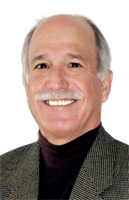
- Procter & Gamble sources 50% of new product ideas from outside
- Starbucks is in Safeway and down the street
- GE Propulsion sells propulsion rather than jet engines
- Netflix now distributes movies over the Web as well as CDs
- Cummins makes power generators as well as diesel engines
- Facebook’s opens API’s to developers such as Zynga
Each example reflects a change in business boundaries. In retrospect, they all make sense. At the time, they required leaders to drive change across multiple boundaries. In today’s world, leadership and boundary change are virtually synonymous.
People are very quick to set boundaries. They are the cornerstone of coping with complexity, scale and risk. We break problems into parts, organizations into functions and business units, and the world into geographical regions. We guard our families against bad guys with walls and alarms. Businesses use contracts to isolate and confine risk. Creating boundaries is so natural that we often don’t notice what we’ve done until we run into unintended consequences
For example, boundaries exclude as well as include. Most companies, including Google, stress the importance of cultural fit in hiring. That helps harmony but overtime, it limits the variety of thinking and perspective within the firm. Since Google values highly analytic, engineering thinking, it doesn’t surprise me that it struggles to create a compelling presence in social networking.
Inside organizations, boundaries define accountability. How many times have you heard “don’t make me accountable for something I can’t control”. The downside is that customers don’t give a hoot about internal accountability; they just want help and a good experience. By definition, their experience is the aggregate of their contact across the firm. Having a Chief Marketing or Customer officer might help call attention to customer experience problems but they can’t do much about it by themselves.
Last, people are far quicker to add boundaries than alter or remove them. Look what happens when there’s an accident or error. The default path is to devise a rule that constrains the action at fault. Rules can help but it doesn’t make many to create a bureaucracy and more importantly, sap personal accountability. Organizations invariably turn inward as they grow since as pleasing one’s boss and colleagues’ takes precedent over the customer. Ironically, we know this because the more rules we set, the more we ask people to think “outside the box” that was just fortified.
At the same, without boundaries, life gets messy very quickly. If you live in home without many walls, it’s hard to find a quiet place. Creative people find boundaries are essential to focus thinking and sift through brainstormed ideas.
So how do superior leaders handle the boundary dilemma?
First, they start with a keen understanding of dilemma described above: left to themselves, people add boundaries and rarely remove them. Consequently, leaders constantly overtly inject themselves into potential boundary setting decisions. Then they drive assumptions to the surface and require evidence about the tradeoffs before acting. They pay particular attention to what’s excluded as well as included.
Second, they test the implications of boundary choices across multiple levels. In corporations, there are four primary levels to watch:
- Personal – How one bounds their thinking, time and relationships
- Organizational – How one invests, groups resources and confines risk
- Business – How one defines the playing field, partners and adversaries
- Environment – How do one probes, reacts and responds to societal forces & changes
P&G’s Lafley understood that sourcing 50% of P&G’s product ideas outside P&G labs was not going to work without changing each of these boundaries. For example, traditional boundaries relative to sharing intellectual property, R&D incentives and knowledge required to source and assess new ideas had to change.
Third, as noted below, boundary masters use sharper criteria to set, cross or change a boundary.
| Setting | Crossing | Changing | |
|
Factors |
Specifically ask people to define what’s excluded & the +/- implications thereof
Where knowledge is explicit, complete or safety related, use strong visible boundaries Where knowledge is tacit or changing, use norms and softer boundaries. Design boundaries to minimize complexity between boundaries |
Provide structural bridges where frequent crossing is mandatory
Use technology to reach wide and empower “social organization” norms Harness external forces (e.g. customers) to drive Internal crossing Use attraction to pull vs. push crossing Use joint goals/metrics |
Experiment to gather evidence before changing or setting
Frequently test continued relevance of existing including “invisible” costs Require quid pro quo of removing existing boundary when adding new Rapidly remove older alternatives when establishing new pathways |
|
Examples |
– Airlines: Pilot checklists for safety
– 4 Seasons: Granting broad discretion for customer service reps |
– Product development: Multi-functional teams
– BestBuy – Geek Squad uses social network to share solutions |
– Harrah’s testing found “Total Rewards” points drives more profitable business than “comp’ed” roo |
Last, boundary masters have confidence in their ability to challenge and change most boundaries. Have you ever noticed how first time astronauts are awed by their initial view of Earth from space. Familiar clues such as national, cultural and political don’t exist. Most boundaries are made by us and therefore, changeable as well. Just be careful.

 I'm Christopher Meyer - author of Fast Cycle Time, Relentless Growth and several Harvard Business Review articles.
I'm Christopher Meyer - author of Fast Cycle Time, Relentless Growth and several Harvard Business Review articles. 